EMS Overview
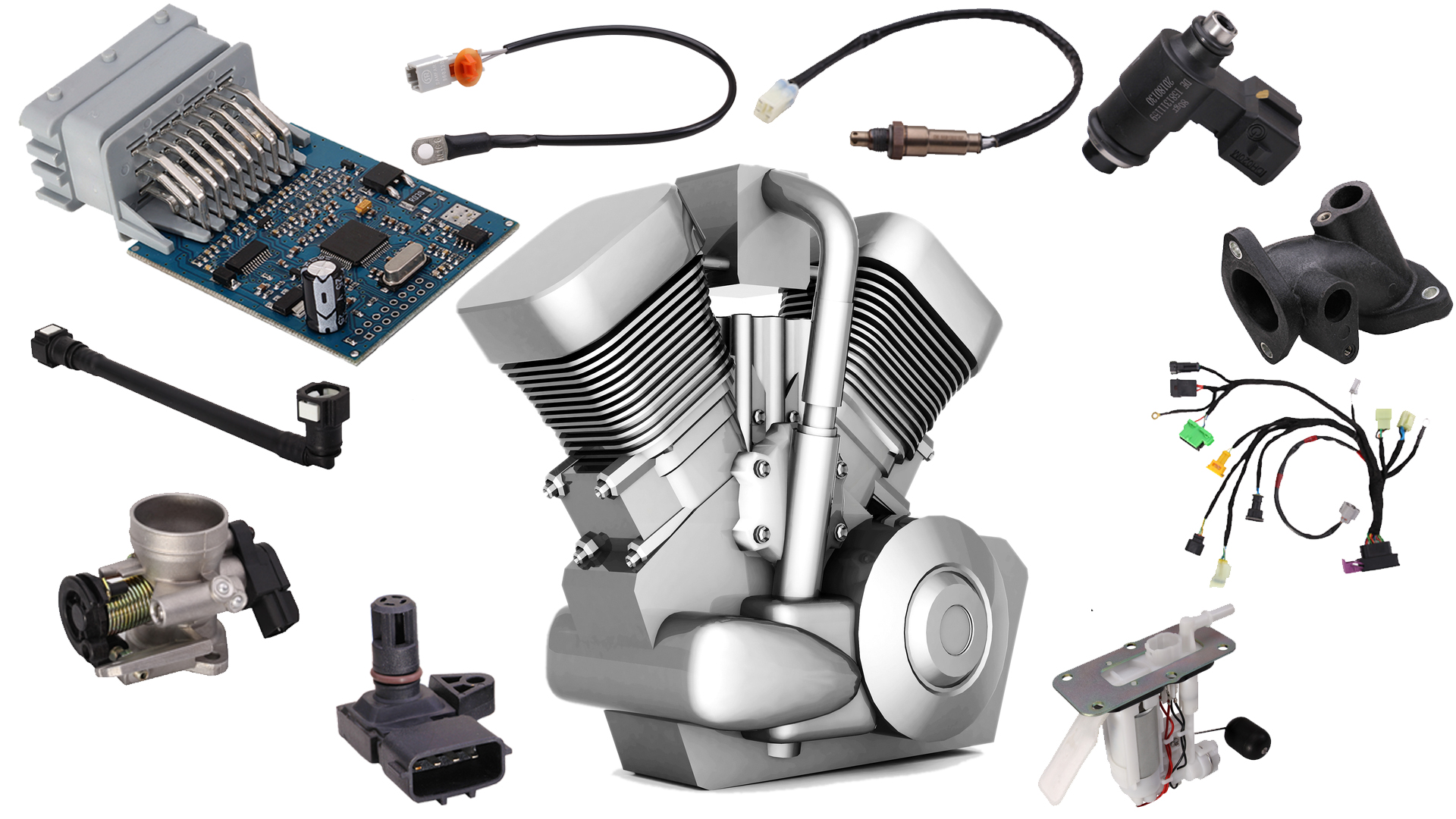
EMS stands for Engine Management System which consists of a wide range of electronic and electrical components such as sensors, relays, actuators, and an Engine Control Unit (ECU). They work together to provide the EMS with vital data parameters. These are essential for governing various engine functions effectively.
The key functions of EMS are:
- To control the rate of fuel supplied to each cylinder
- To calculate and control the exact point of ignition on each cylinder
- To optimize adjustment of the injection and ignition timings to deliver the maximum engine performance throughout all engine speed and load conditions
- To control and determine the exact point of fuel injection
- To calculate and maintain the desired air/fuel ratio, to ensure the 3 way catalysts operate at their maximum efficiency
- To maintain full idle speed control of the engine
- To ensure the vehicle meets regulatory compliance
- To ensure the vehicle meets with the fault handling requirements, as detailed in the ‘on-board diagnostic II’ (OBDII) legislation
- To provide an interface with other electrical systems on the vehicle
For any application, any emission level and any engine capacity 50 to 300 cc we conduct research, design and development and offer services as well as products in field of two/three wheelers Engine Management System. We support domestic needs in Turkey and at the same time welcome a possibility of offering our services/products internationally. Our customers are companies which are involved with Automotive Electronic Control Systems.
UAV
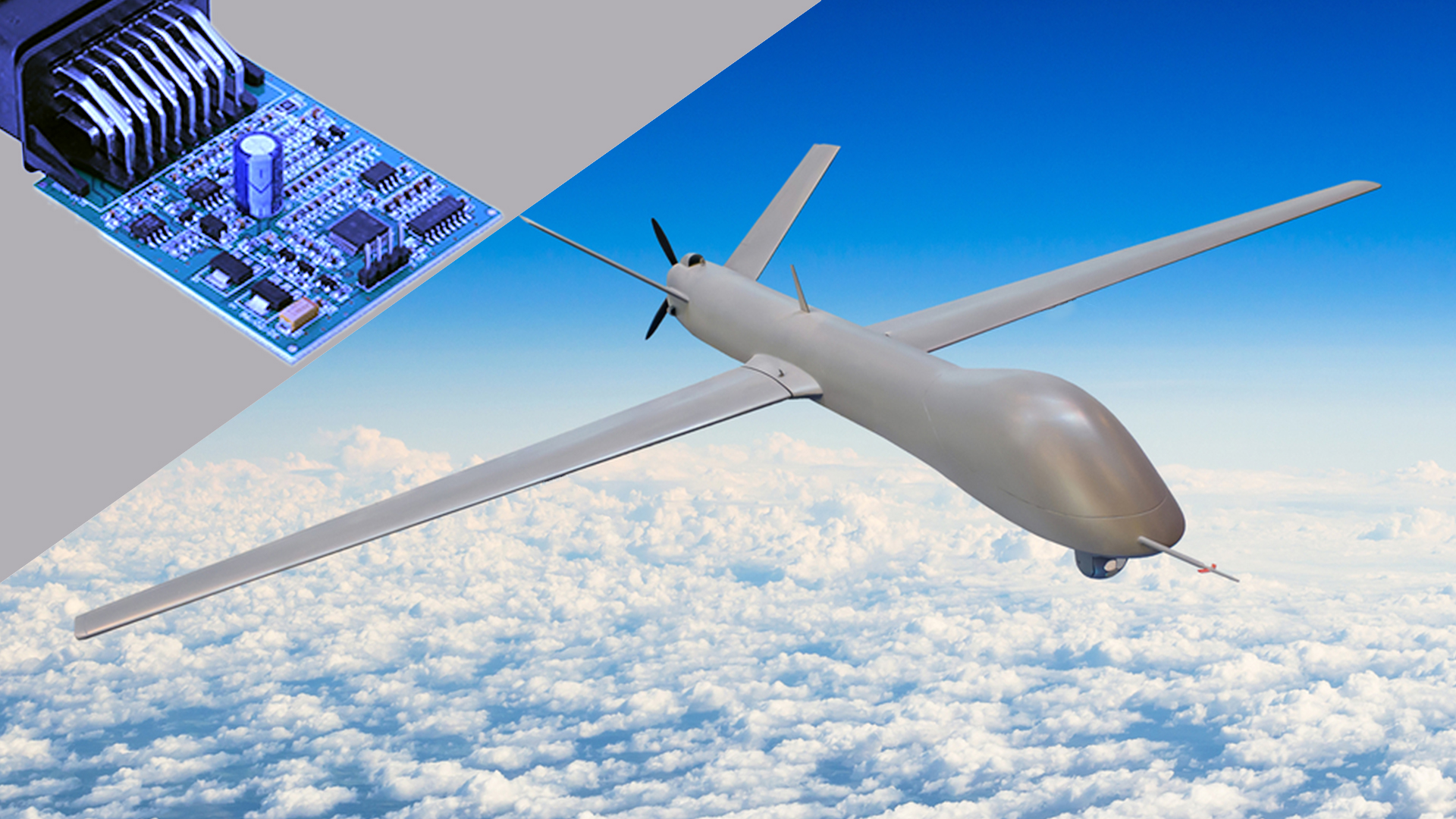
Unmanned Aerial Vehicle, known as UAV/drone, is an aircraft without a human pilot on board. UAV usually contains 1 or 2 cylinder engines and their capacity ranges from 20cc to 600cc displacements based on their operation. The engines which are used in UAV may face a problem of having low inherent reliability and large fuel consumption which resulted in very less endurance time of the flight and low proficiency.
In IP-Engineering we offer reliable EMS for UAVs to overcome these problems. This system benefits from a powerful Engine Control Unit (ECU) to read from several sensors in the engine and use the information to control the fuel injection, ignition systems and other parameters of the engine which makes the flight more reliable.
Motorcycle
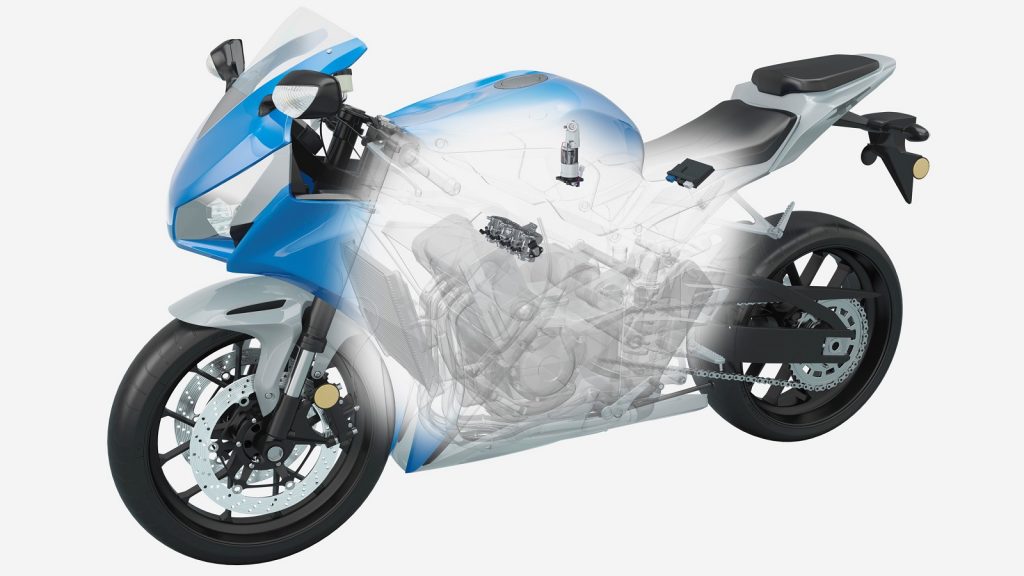
EMS for one/two cylinder engines
We supply a complete EMS for two and three wheelers to pass Euro 4 emission level. Although our EMS is an economic system compare to well-known competitors but already we proved to all our customers it is a reliable and a durable system.
Main components: ECU, Oxygen sensor, TMAP, Engine temp. Sensor, throttle body and TPS sensor, Injector, Manifold, In-tank fuel pump, Fuel pipe, Wiring harness and Canister valve.
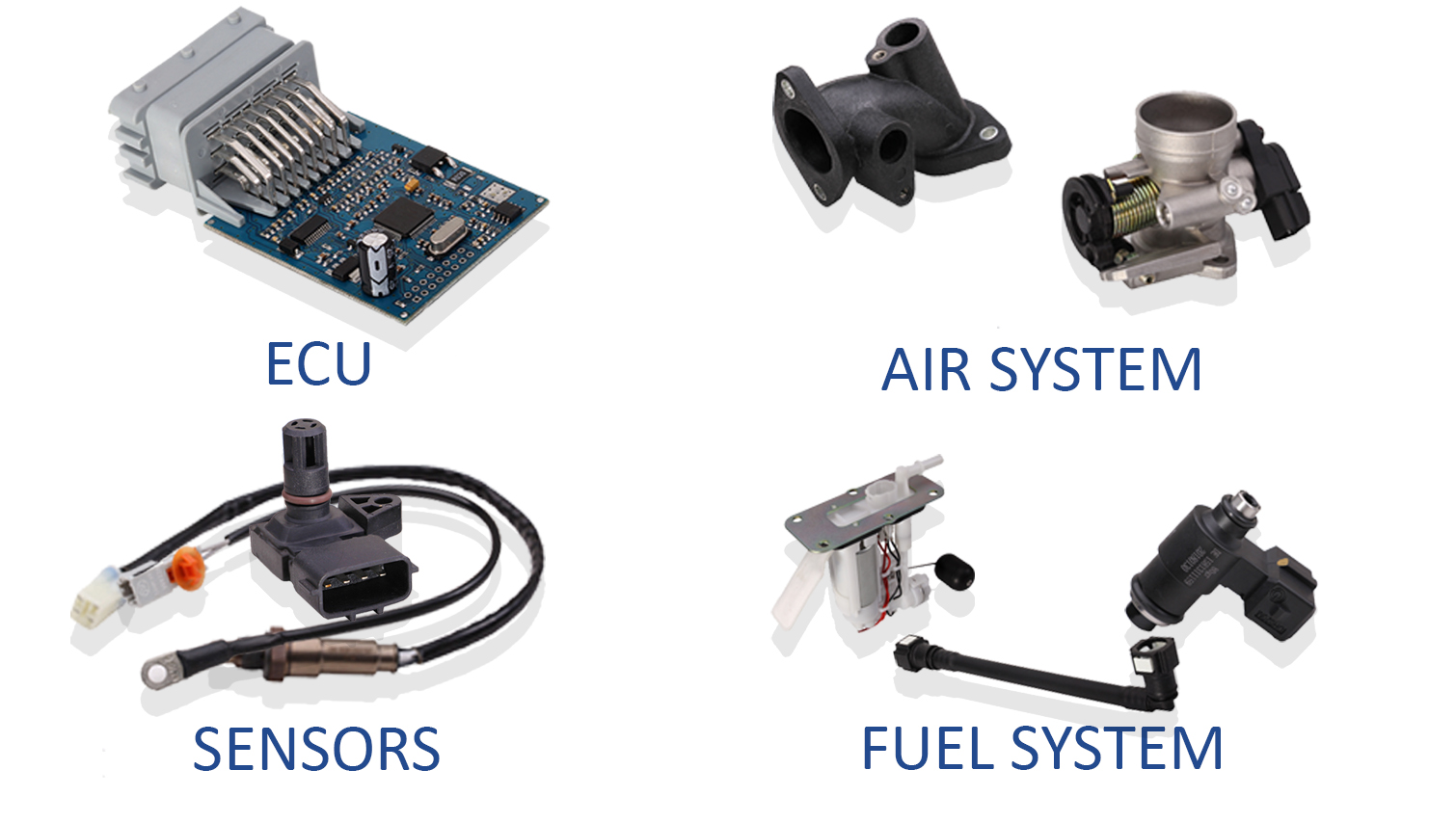
Application engineering and ECU calibration
If you decide to supply our EMS then we do all necessary activities for free to make ready your product for homologation and mass production, including:
Layout design and system packaging, Detail design of new parts like new manifold for your bike, preparing demonstration bike for your customer, ECU calibration as well as after sale service support.
We are professional in ECU calibration for a pleasure drivability in different climates and different geographical conditions.
Small spark-ignition engines
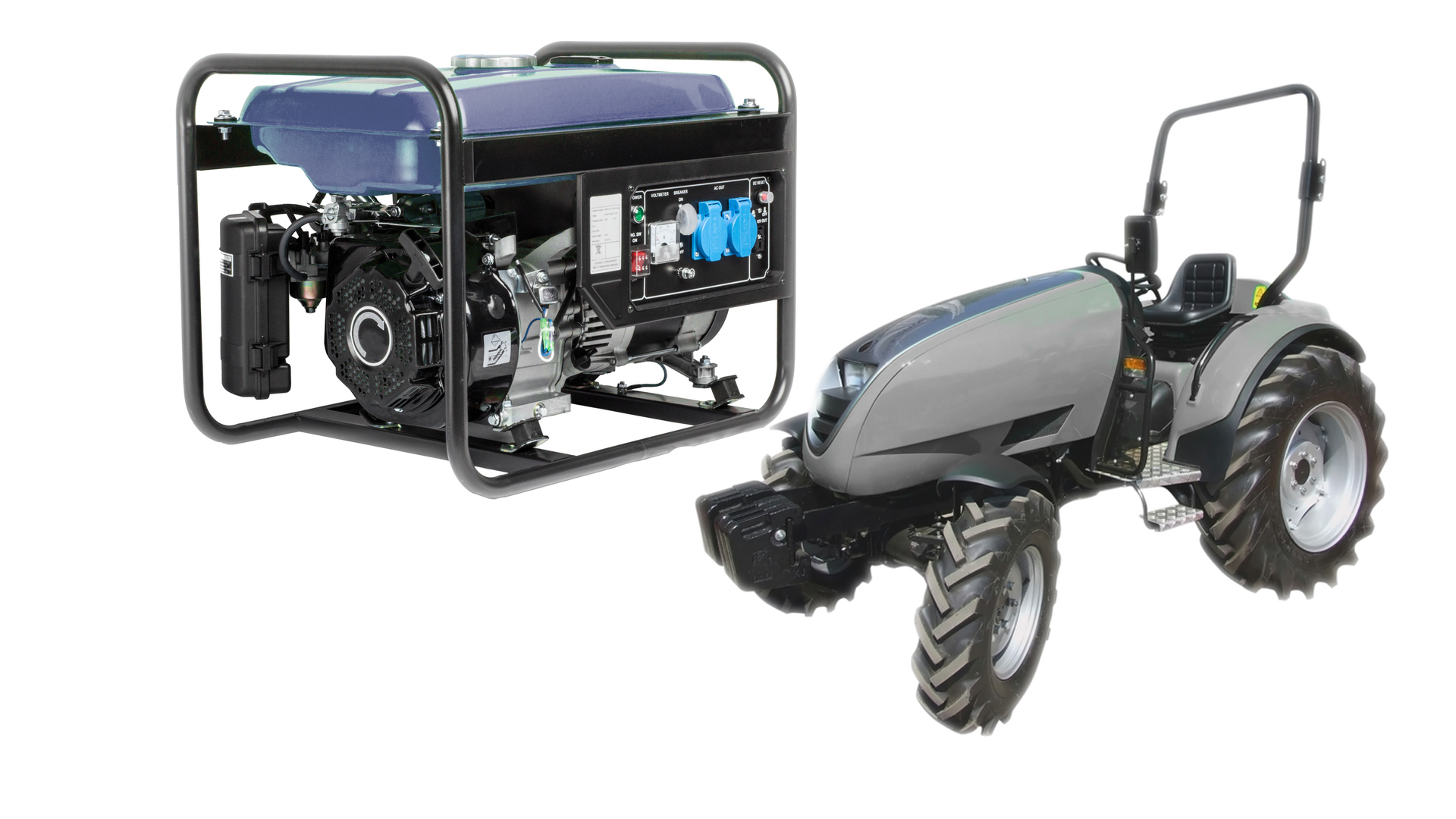
These engines typically use gasoline but liquefied petroleum gas or natural gas can also be used. Small spark-ignition engines are typically found in lawn and garden machines (hedge trimmers, brush cutters, lawnmowers, garden tractors, snowblowers, etc.); in light-duty industrial machines (generator sets, welders, pressure washers, etc.); and in light-duty logging machines (chainsaws, log splitters, shredders, etc.).
In IP-Engineering we equip these small engines with reliable EMS to promote the engine efficacy and reduce the emissions.
